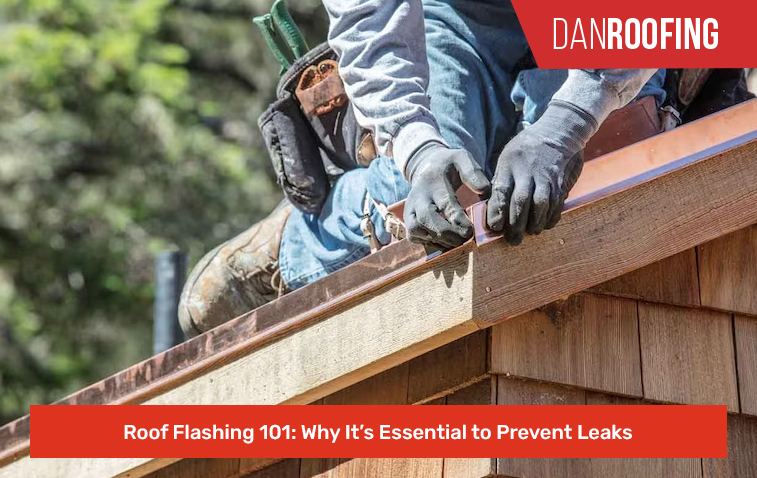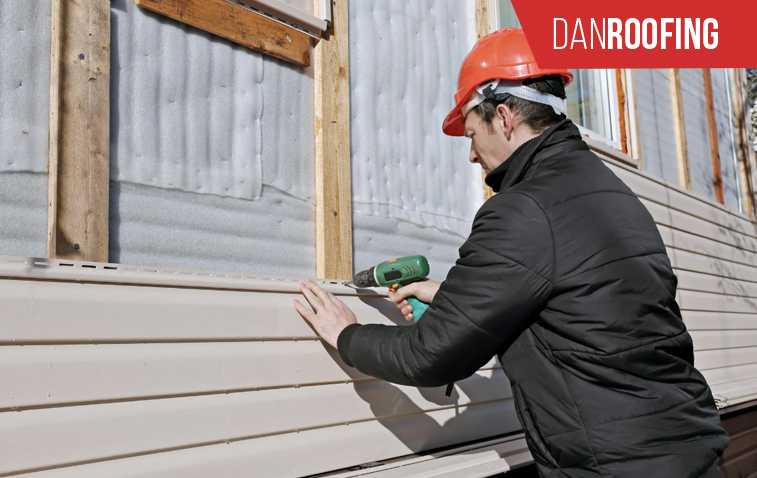Sometimes, water can sneak in from roofs and cause leaks. This can damage our walls, ceilings, and even our things inside. One important thing that helps stop leaks is called roof flashing. Roof flashing is like a superhero for your roof. It is a thin material, usually metal, that builders put around places where water likes to get in. These places include chimneys, vents, and where the roof meets a wall. Flashing makes a waterproof barrier. This barrier stops water from seeping into your house. Therefore, it is important to understand why roof flashing is so essential.

Water likes to collect and drip around certain parts of your roof. These are called vulnerable areas. These spots include where the roof meets a wall, around chimneys, skylights, and vents. These places have gaps or joints that water can easily get through. Flashing acts like a shield in these spots. It covers the gaps and makes a smooth surface. This smooth surface makes water flow away from these sensitive areas. Thus, flashing keeps water out and prevents leaks.
Furthermore, these vulnerable areas are prone to damage from weather. Rain, snow, and ice can wear down the roof materials over time. Flashing provides extra protection against this wear and tear. It helps keep the roof strong and prevents costly repairs later. Consequently, protecting vulnerable areas is a key job of roof flashing.
Additionally, without flashing, water can seep into the roof structure. This can lead to wood rot, mold growth, and other serious problems. These problems can be expensive to fix. Therefore, flashing saves homeowners money in the long run by preventing these issues.
The main job of roof flashing is to stop water from getting inside your house. It creates a waterproof seal around vulnerable area. This seal keeps water out, even during heavy rain or snow. Therefore, flashing is like a raincoat for your roof. It keeps everything dry underneath.
Moreover, flashing works by directing water away from the roof’s openings. It is installed in a way that makes water flow down and off the roof. This prevents water from pooling or sitting in one spot. Thus, it stops water from seeping through cracks or gaps.
Besides this, properly installed flashing overlaps the roof shingles. This overlap creates an extra layer of protection. This extra layer makes it even harder for water to get in. Consequently, preventing water infiltration is a very important reason why roof flashing is essential.
Roofs are built to last a long time. However, water damage can shorten their lifespan. Leaks can rot the roof’s wood structure and damage other parts. Flashing helps prevent this damage. It keeps water away from the roof’s vulnerable areas. Therefore, it helps the roof last longer.
In addition, flashing protects the roof from the damaging effects of weather. Sun, wind, and temperature changes can cause the roof materials to expand and contract. This can create cracks and gaps. Flashing helps prevent these cracks by providing a stable barrier. Thus, it protects the roof from weather damage.
Furthermore, by preventing leaks and water damage, flashing helps maintain the roof’s integrity. It keeps the roof strong and sturdy for many years. Consequently, extending roof lifespan is another important benefit of roof flashing.
Fixing leaks can be very expensive. Water damage can ruin walls, ceilings, insulation, and even furniture. Replacing damaged materials and fixing structural problems can cost a lot of money. Flashing helps avoid these costly repairs. It prevents leaks before they happen. Therefore, it saves homeowners a lot of money in the long run.
Moreover, flashing is a relatively inexpensive part of the roofing system. Installing it properly during construction or roof replacement is a small investment that provides big benefits. Thus, it is a smart way to protect your home and your wallet.
Besides this, by preventing water damage, flashing also helps avoid health problems. Mold growth caused by leaks can trigger allergies and asthma. Fixing mold problems can also be very costly. Consequently, avoiding costly repairs and health problems is a significant reason to use roof flashing.
Leaks can create damp and dark places in your home. These places are perfect for mold and mildew to grow. Mold and mildew can cause health problems and damage your home. Flashing helps prevent leaks. Thus, it helps prevent mold and mildew growth.
Furthermore, flashing keeps water away from the roof’s structure. This prevents the wood from getting wet and staying damp. Dry wood is much less likely to grow mold. Therefore, flashing helps keep your home healthy.
Additionally, mold and mildew can spread quickly. They can damage walls, ceilings, and even your belongings. Fixing mold problems can be difficult and expensive. Consequently, preventing mold and mildew growth is another important reason why roof flashing is essential.

A roof’s structural integrity means how strong and stable it is. Water damage can weaken the roof’s structure. Rotting wood and damaged framing can make the roof unsafe. Flashing helps prevent this damage. It keeps water away from the roof’s supporting parts. Therefore, it helps maintain the roof’s structural integrity.
Moreover, flashing protects the roof from the damaging effects of weather. Strong winds and heavy snow can put a lot of stress on the roof. Flashing helps distribute this stress evenly. Thus, it helps the roof withstand harsh weather conditions.
Besides this, a strong and stable roof is essential for the safety of your home and family. Flashing plays a crucial role in ensuring this safety. Consequently, maintaining structural integrity is a very important reason to use roof flashing.
Roof flashing is installed in areas where the roof is most vulnerable to water intrusion. This includes places where the roof intersects with other structures, such as chimneys, walls, and skylights. Additionally, flashing is used around vents, pipes, and other roof penetrations. This strategic placement ensures that water is effectively diverted away from these sensitive areas, preventing leaks and potential damage.
Various materials can be used for roof flashing, each with its own advantages. Aluminum is a popular choice due to its lightweight nature and resistance to corrosion. Copper is another durable option known for its long lifespan and aesthetic appeal. Galvanized steel is also commonly used because it is strong and relatively inexpensive.
Regular inspection of roof flashing is important to ensure its continued effectiveness. It is generally recommended to inspect flashing at least twice a year, ideally in the spring and fall. Additionally, inspections should be conducted after severe weather events, such as heavy storms or strong winds.
Whether damaged roof flashing can be repaired or needs to be replaced depends on the extent of the damage. Minor damage, such as small cracks or loose pieces, can often be repaired with sealant or by reattaching the flashing. However, if the flashing is severely corroded, rusted, or significantly damaged, replacement is usually necessary.
Several signs can indicate that roof flashing is failing. One common sign is water stains on interior walls or ceilings, particularly near areas where flashing is installed, such as around chimneys or skylights. Other signs include peeling paint, damp insulation, or the presence of mold or mildew.
Yes, the type of roofing material can influence the type of flashing used. Different roofing materials have different properties and require specific flashing techniques. For example, metal roofing often uses metal flashing that is compatible with the roofing material. Asphalt shingles may use aluminum or galvanized steel flashing.